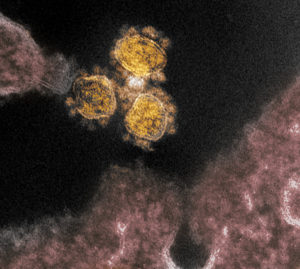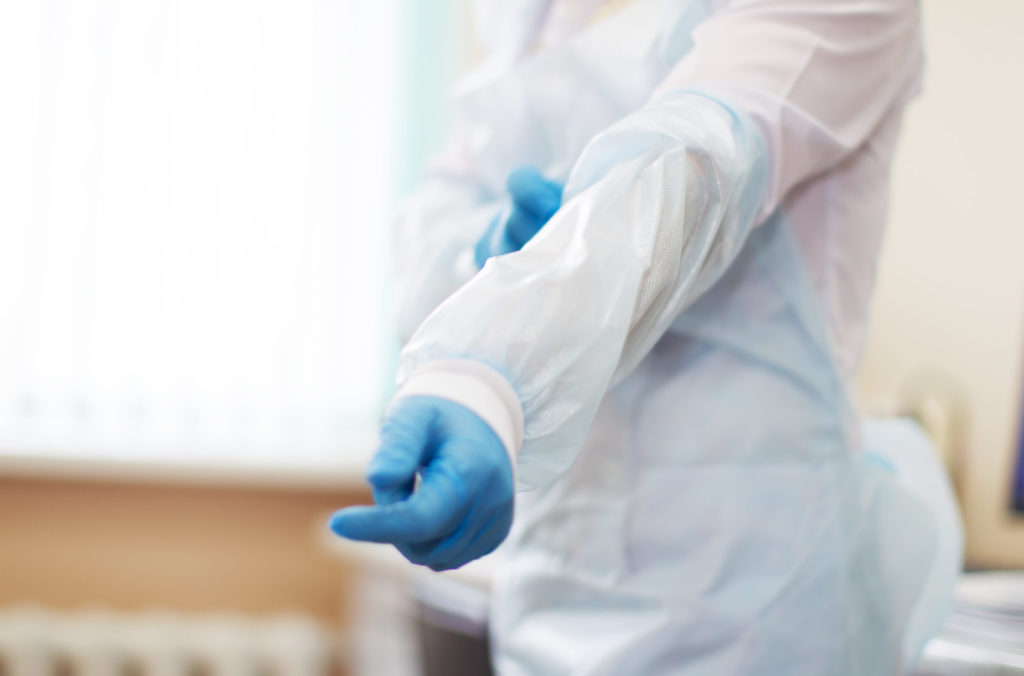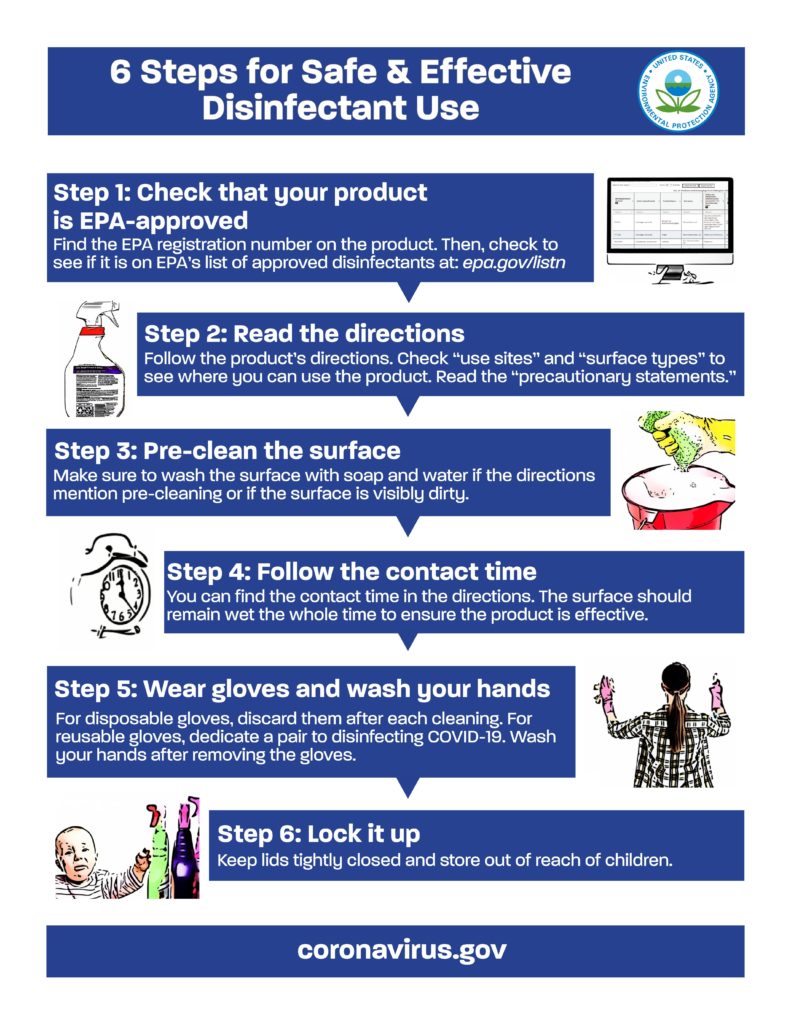
Restorers: Give thought to PPE, process when treating vehicle for COVID-19 coronavirus
By onAssociations | Business Practices | Education | Repair Operations | Technology
A little advance thought on personal protective equipment and process can help minimize the threat of COVID-19 to an auto body shop’s staff and customers, according to an SCRS webinar Tuesday.
This can involve considering something as seemingly simple as donning and removing the PPE itself.
PPE
Encircle business development Vice President Kris Rzesnoski, who has worked in property restoration for 15 years, noted that even the property restoration industry “had to ramp up their skills.” Get a little soot on your body, and you’ll still probably be OK. A suicide scene is “really high-risk” for a restorer, but COVID-19 poses an even greater threat, he said. A shortage of supplies like PPE and substances to treat the vehicle has further complicated the matter.
Property restoration expert Norris Gearhart, founder of Gearhart and Associates, said repairers need to consider their liability and workman’s comp exposure before beginning to accept vehicles during the COVID-19 pandemic. The OSHA requirements for a safe workplace “don’t go away,” he said.
OSHA has suspended annual fit testing requirements, but a mask with two straps might be considered a filtering facepiece or respirator instead of a dust mask, and it still might need a fit test, he said.
OSHA enforcement memorandums signal flexibility on some PPE during the COVID-19 pandemic — but the agency doesn’t give businesses carte blanche, either.
Rzesnoski said the OSHA General Duty Clause still applies — the company must mitigate risk.
European Motor Car Works owner Kye Yeung said his shop scheduled dropoffs and pickups so only a single customer was in the office at a time. It also created a proprietary plan for cleaning vehicles and consistently used the same personnel to execute it. It also marked vehicles so staff moving them knew whether it had been treated.
Rzesnoski noted that a technician sitting in a vehicle touched far more surface area than a professional restorer would encounter in a building, where one’s hands and feet received most of the problematic contact. “You need a protective layer” between the cleaner and the vehicle, according to Rzesnoski. They might have to wear something like a “disposable rainsuit” to cover more of their body’s surface area.
The Centers for Disease Control also describes using gowns if possible in its guidance for cleaning and disinfecting businesses:
• The risk of exposure to cleaning staff is inherently low. Cleaning staff should wear disposable gloves and gowns for all tasks in the cleaning process, including handling trash.
° Gloves and gowns should be compatible with the disinfectant products being used.
° Additional PPE might be required based on the cleaning/disinfectant products being used and whether there is a risk of splash. (Minor formatting edits.)
Rzensoski encouraged repairers to minimize touch points by remaining outside the vehicle as much as possible to clean it.
Gearhart said that COVID poses a PPE problem, for “we don’t see this.” This poses a risk of cross-contamination when an employee removes PPE. He said he trains people to remove it by covering the outside with chocolate pudding. Can the workers remove it without getting the pudding on themselves?
“That’s where you begin to see it,” he said.
It’s easy to cross-contaminate, he said.
He gave the example of a respirator changing the worker’s field of vision, he said. The repairer might look down to reach for a suit zipper — only to have inadvertently contaminated the underside of the mask. Then you look down again while removing the suit — and you’ve just contaminated the “underlayer.”
Employees should train in the shop’s processes and measure success.
“It’s amazing how difficult it can be,” he said.
Relying on professional restorers could certainly be an option, but it could be pricey. Rzesnoski said his company used to clean and apply disinfectant to police cars, and the cost to handle such a vehicle might normally be $350-$700. It’s a confined space, you need to use a hazardous remediation technician, tools must be disinfected, and the company is “burning up PPE.”
Process
Rzesnowski mentioned the challenge of an industry like collision repair where many touch points existed, extending to even a tow driver who needs to access a vehicle.
Gearhart said one might design a process to address this. Perhaps a dry cleaner bag covers a seat back, with another barrier on the seat, he said. The driver wears a N95 mask and uses gloves or hand sanitizer. At the end of the shift, there could be a protocol to take a shower and launder clothing.
Asked about the effects of laundering on the virus, Gearhart said soap, water and flushing away should remove the risk in normal laundry; those wishing to take an extra predcaution could run the load separately from other clothing, according to Gearhart. The CDC directs health care and some hospitality entities to follow the guidelines for C. diff., but that’s not possible with a normal home washing machine, he said.
The Centers for Disease Control recommends washing hands after laundry and steps like:
• In order to minimize the possibility of dispersing virus through the air, do not shake dirty laundry.
• Wash items as appropriate in accordance with the manufacturer’s instructions. If possible, launder items using the warmest appropriate water setting for the items and dry items completely. Dirty laundry that has been in contact with an ill person can be washed with other people’s items.
• Clean and disinfect hampers or other carts for transporting laundry according to guidance above for hard or soft surfaces. (Minor formatting edits.)
Similar to the CDC’s laundry guidance, repairers and others should take care not to inadvertently aerosolize COVID-19 from surfaces like floor mats, according to Rzesnowski. Gearhart encouraged any vacuuming of surfaces like floor mats be done with a true HEPA vacuum (Rzesnowski said a Shop-Vac with a HEPA filter might be insufficient), for a traditional vacuum behaves “more like a leafblower” for particles too small to be seen with the eye. Equipment like the vaccum’s nozzle should be cleaned and wiped down with disinfectant between uses.
Other intake processes might include having the customer turn off all HVAC and the radio and set the seat to a neutral position, according to Rzesnowski. Yeung said his shop encourages customers to bring in a vehicle “as spartan as possible,” and Rzesnoski even suggested having the customer clean mats themselves at a car wash to reduce the risk to a business’ team. (One hopes the car wash has a true HEPA vacuum then.)
The customer definitely shouldn’t be permitted to borrow the shop’s tools to clean a vehicle, according to Gearhart. “Let the risk go somewhere else,” he said.
Gearhart acknowledged that it might feel like some precautionary measures “borders on ridiculous,” but there are many solutions which are “doable” and “not unreasonable.” He mentioned examples like a shop’s workflow traveling in a single direction and covering surfaces with the clear material one might see affixed at a tattoo parlor.
Sit down and figure out how to handle the vehicle safely, and “do it the exact same way every time,” he said.
Rzesnoski said repairers should use disinfectants on the EPA’s “N List” and build the process around those substances and delivery methods. (He suggested a water-based, pH-neutral disinfectant would minimize damage to the vehicle’s surfaces.)
Streamline your product selection as much as possible, according to Rzesnoski. If you use five different products, that means you’ll need five different processes, he warned.
“You want to simplify this as easy as you can,” he said.
Asked if an ideal process would be to clean the vehicle at intake, follow precautions during the repair and then clean the vehicle again before delivery, Rzesnoski called these “the big three stages.”
If you’ve diluted the viral load, disinfected surfaces and maybe let the car sit before turning the vehicle over to technicians, the techs probably didn’t need PPE to work on the vehicle. It’s become a “‘cleaner car,’” not a “‘street car,’” he said.
If the vehicle was a street car, “you’re not touching it without full gear,” Rzesnoski said.
The CDC lists additional precautions for a typical business if there’s a suspected or confirmed COVID-19 case — as opposed to its regular businesses cleaning and disinfecting practices. It also describes what to do for a non-emergency vehicle that transported someone confirmed or suspected to have COVID-19. (There’s nothing specifically tailored for automotive service and repair professionals, but the Mobile Air Conditioning Society has asked OSHA, the CDC and the EPA to address this gap.)
However, Rzensoski said he didn’t think collision repairers were equipped to handle a vehicle confirmed to have COVID-19. It wasn’t time for them to begin experimenting or learning how to use gear, he said. Instead, the repairer should call a restoration company, he argued.
More information:
Occupational Safety and Health Administration enforcement memos (search for “COVID-19”)
“Ask the Experts – How Professional Restorers Deal with “Disinfecting” Vehicles”
Society of Collision Repair Specialists, April 28, 2020
Centers for Disease Control, April 29, 2020
CDC interim COVID-19 guidance for businesses
CDC guidance for businesses with suspected/confirmed COVID-19 cases
Centers for Disease Control COVID-19 coronavirus portal
Environment Protection Agency “List N” of COVID-19 disinfectants
Images:
A colorized transmission electron microscope image shows COVID-19 SARS-CoV-2 virus particles, gold, emerging from lab-cultured cells. (Rocky Mountain Laboratories/National Institute of Allergy and Infectious Diseases; https://creativecommons.org/licenses/by/2.0/legalcode)
A little advance thought on personal protective equipment and process can help minimize the threat of COVID-19 to an auto body shop’s staff and customer. (Sviatlana Lazarenka/iStock)
Environmental Protection Agency instructions on using “N List” products. (Provided by EPA)


